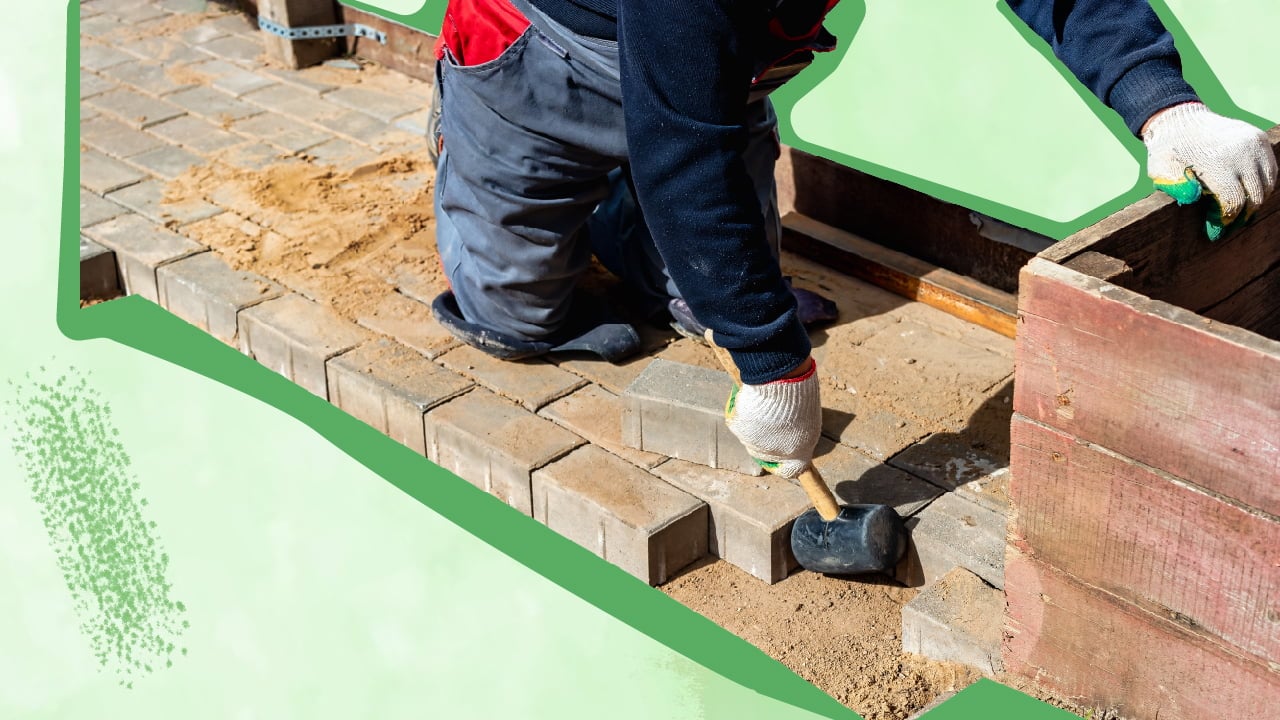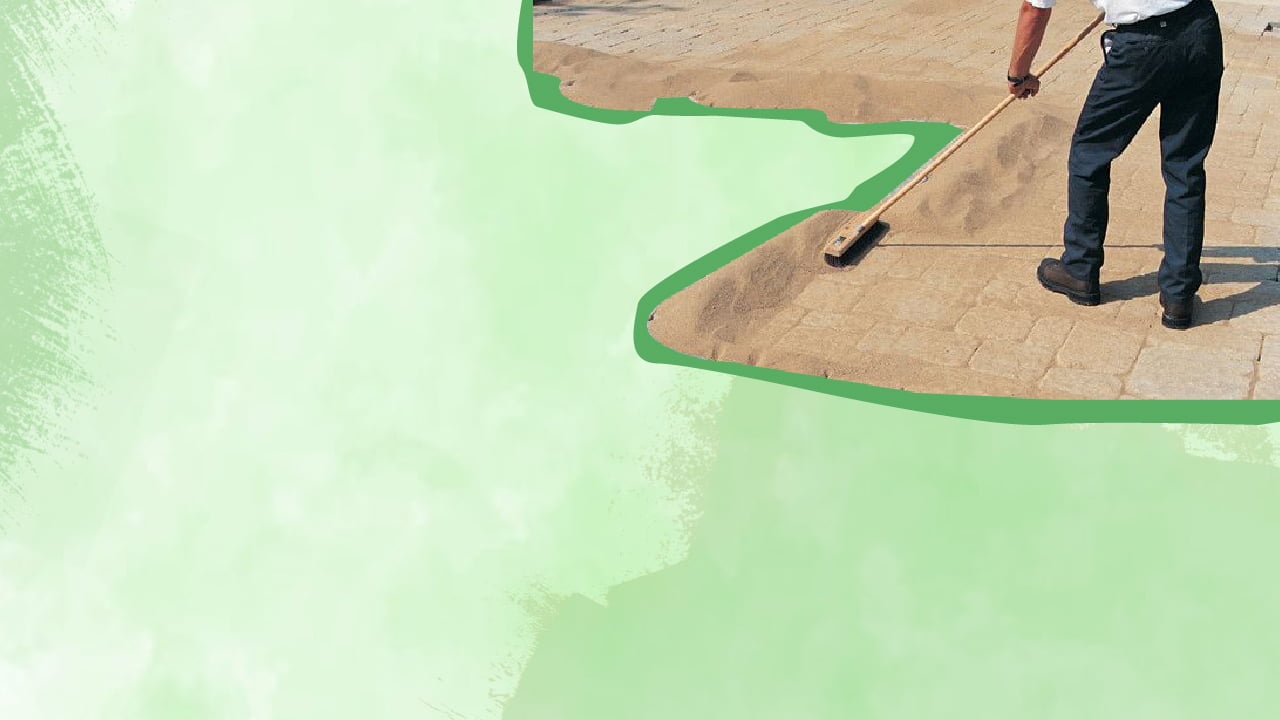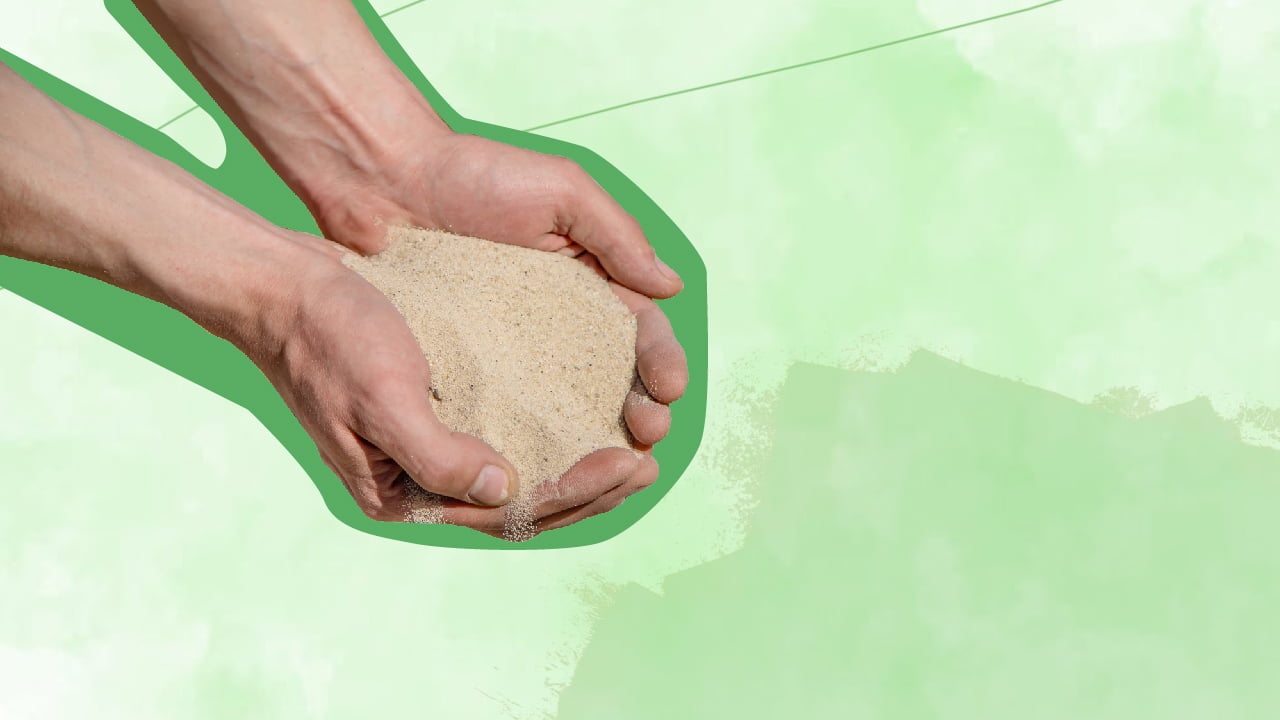Polymeric sand proves particularly useful during path or patio installation, and you must apply it after laying all the layers. Also, remember to apply water and activate the bonding agents in the sand so that the pavement doesn't shift.

Before knowing about the polymeric sands and how did they works properly. I always wondered how to get polymeric sand off pavers when engaging in landscaping or home construction projects. As the sand settled, tiny particles came loose and stuck to the surface, creating a haze and affecting the beauty of the reconstructed surface.
But in my efforts to find a solution, I learned regular sand is useful for many hardscaping tasks. Today I will highlight how regular and polymeric sand is different and when to use them.
What Is Polymeric Sand?

If you are wondering what is polymeric sand and how it's used, let me explain.
Polymeric sand isn't a natural compound; instead, it's a man-made product specifically manufactured for use in landscaping and construction work. The basis for creating polymeric sand is combining silica or other relevant additives with fine particles of sand.
Using proper additives helps create a strong bond between the sand particles for greater durability. Moreover, non-activated polymeric sand possesses the same texture as regular sand particles after production. All you need is to add water to activate the bonding agent within the sand and create a hard, gel-like compound.
Advantages Of Polymeric Sand
- Suitable for path and patio installations
- Adheres strongly to pavers
- Creates a durable and reliable bond
- Simple and convenient application
- Available in multiple shades to match the walkway and patio design
- Better drainage
- Eye-catching aesthetics
- Can withstand heavy rainfall
- Protects against insects and weed growth
- Longer lifespan
What Is Regular Sand?
Even the best polymeric sand is not suitable for all hardscaping projects, which is where regular sand proves useful. For such projects, you must use all-purpose sand, known as leveling or joint sand, to create a tight seal between the paver joints.
I have seen that regular paver sand does not have bonding agents in many instances, but as the sand particles are coarse, they interlock to form a strong gap filler. People mostly use regular sand due to its convenience and easy application.
Advantages of Regular Sand
- Creates a level base
- Suitable for paver installation
- Guarantees even distribution over the walkway or patio
- Affordable option
- Versatile and better for making adjustments
- Doesn't form a permanent bond and is easy to remove
Polymeric Sand Vs Regular Sand - Which One Should You Choose?
I have provided a basic idea of how polymeric and regular sand differs, and in this section, I will highlight how they match up in various categories.
-
Durability
For any hardscaping project to bear fruit, it must last a long time. While the lifespan of any surface or paver joint can vary based on the climate and product type, polymeric sand usually lasts for 10 years.
Regular sand can also last long but will require adjustments every 2 years so that the pavement doesn't shift.
-
Pest Control
Regular sand doesn't offer a permanent solution against pest infestation and can only slow down weed growth or insects burrowing for a short time after installation. On the other hand, polymeric sand is more beneficial for preventing weeds and insects from pushing through the joints.
-
Appearance
After you have let the material set, it's challenging to tell the difference between polymeric and regular sand. Both options are available in various colors and shades, although polymeric sand delivers a cleaner look, suitable for daily use.
This is due to the strong binding agent holding on to the sand particles, preventing them from blowing away or loosening from the joints in high-traffic areas.
-
Ease Of Use
The major difference between regular and polymeric sand lies in the application method. I have noticed that applying polymeric sand is easier as there is more room for error, but remember to apply water to activate the bonding agents.
Also, use a broom to blow away dust from the surface of both materials and maintain a vibrant appearance. Once the loose sand settles on the surface and forms a haze, it becomes challenging to clean the paver.
-
Common Problems
To tackle the haze problem, you can use cement-free polymeric sand while removing dust from the surface while adding water. Meanwhile, regular sand erodes more quickly, especially when exposed to natural elements, like rain or strong winds. To prevent this, add more sand or a strong sealant over the surface of the pavers.
-
Price
Polymeric sand is pricier than all-purpose sand; however, spending a little extra is worth it, given the durability of a polymeric paver.
Tip
Choosing the correct sand, depending on the area, is vital because if the pathway or pavement is in the shade, it will be too moist and cool for the sand to set. Also, check the weather and postpone all construction work if it's going to rain.
Even though it is possible to mix polymeric sand with regular sand or cement, I recommend that you don’t do it. This is because when the cement settles and forms a compact mass, it prevents the sand from adjusting to temperature changes, increasing the chances of cracking. Moreover, applying cement between the cracks is challenging, and if you don’t wipe it off before it hardens, it can hamper how the paver looks. A sealant is applied to the surface of the pavers and the joints in between to protect the surface from stains and keep the color intact. Most importantly, it strengthens the joints more than just polymeric sand to guarantee longevity.Polymeric Sand Vs Regular Sand FAQs

Polymeric Sand Vs Regular Sand Conclusion
Both sand types have pros and cons, and which material you opt for depends on the type of project and personal preference. Ask yourself what you wish to achieve and the purpose for choosing the most suitable option.
Overall, I feel the benefits of polymeric sand outweigh the advantages of regular sand, providing more value for money on multiple projects. But regular sand is ideal for people on a budget and lasts several years with proper maintenance.
